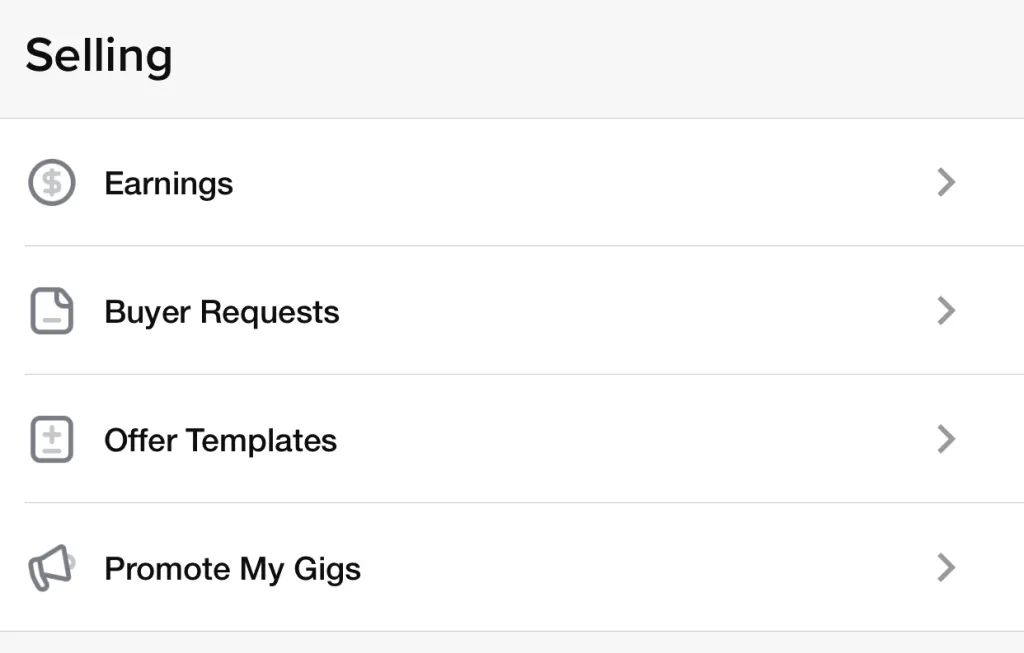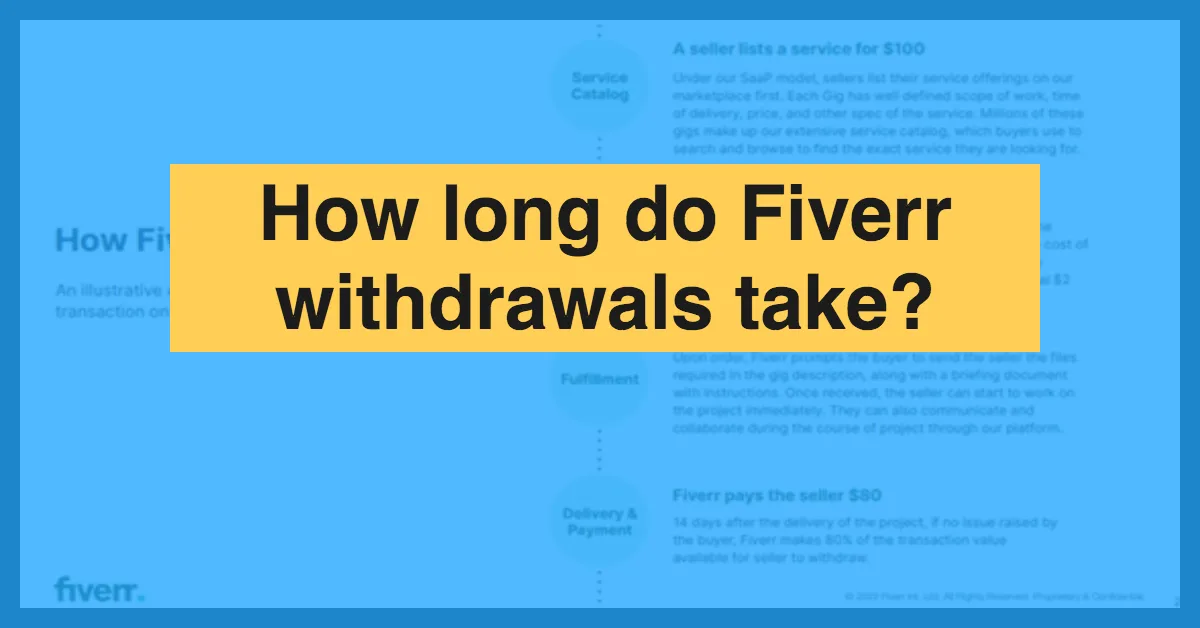Fiverr is an incredibly popular online marketplace, allowing freelancers and buyers to connect over various services. Launched in 2010, it has dramatically transformed the way people utilize their skills while providing countless opportunities for those looking to hire talent. You can find everything from graphic design, writing, and digital marketing to video editing and programming—all on this platform!
What’s really neat about Fiverr is its accessibility. Whether you’re a seasoned professional or just starting, you can create a profile showcasing your talents and set up “gigs” that buyers can browse. The platform operates on the principle of services starting at just $5, hence the name “Fiverr.” However, gigs can be priced far beyond that, depending on the complexity and the seller's expertise.
But as you're diving into this vibrant marketplace, one question that often arises is regarding payments. With a vast array of services and payment methods, it’s essential to understand how the payment process works before you start making transactions. This will not only help you feel more confident about your spending but also ensure a seamless experience—whether you’re purchasing a gig or offering your own services.
2. How Payment Works on Fiverr

Now, let’s get into the nitty-gritty of how payment works on Fiverr. Understanding this process is crucial for both buyers and sellers alike. The payment structure is designed to be user-friendly, but there are a few key points to keep in mind.
When you decide to purchase a service or gig on Fiverr, here’s a simple breakdown of what happens:
- Payment Upfront: You will need to pay for the gig up front. Once you confirm an order, Fiverr securely processes your payment before your seller starts working on it.
- Payment Options: Fiverr offers various payment methods, such as credit/debit cards, PayPal, and even Fiverr Credit. Choose the one that best fits your needs!
- Order Confirmation: After you make your payment, you receive an order confirmation detailing your purchase, including the estimated delivery time.
- Seller Funds Release: Once the seller completes the work and you approve it, Fiverr releases your payment to them, less their service fee (which is generally 20% of the gig price).
- Refund Process: If for any reason you aren’t satisfied with your order, Fiverr provides a mechanism for refunds, although this may vary by situation.
In summary, yes, you do have to pay upfront for gigs on Fiverr. This system ensures that both parties are committed—a buyer is assured their funds are secured, while sellers know they have been compensated for their efforts. So, as you navigate your purchasing adventures on Fiverr, feeling confident about the payment process can only enhance your experience!
Also Read This: Why Is Monitoring Competitor Keywords Essential for Your Fiverr Gig Success?
Fiverr’s Escrow System Explained

If you're new to Fiverr, you might be wondering why the payment process feels a bit different from other freelance platforms. That's where Fiverr's escrow system comes into play, and it's designed to keep both buyers and sellers safe. But what does this mean for you?
In simple terms, when you place an order on Fiverr, the money isn't paid directly to the seller right away. Instead, Fiverr holds your payment in an escrow account. This provides an extra layer of security for both parties involved. Here’s how it works:
- Placing an Order: When you decide on a gig and click that shiny "Order Now" button, your payment is processed but isn’t transferred to the seller immediately.
- Funding the Escrow: Your funds move into a secure escrow account where they wait until the seller delivers the finished work.
- Review Process: After the seller completes your project, you’ll have the chance to review it. This is your time to ensure that everything meets your expectations.
- Release of Funds: Once you’re satisfied and approve the work, that's when Fiverr releases your payment to the seller from the escrow account.
This system helps to ensure that sellers are motivated to deliver high-quality work, knowing that they won’t get paid until you’re happy with the results. So, it’s a win-win situation! You’re protected, and sellers are encouraged to meet your expectations.
Also Read This: How Much Is Fiverr Stock? A Comprehensive Guide
When Do You Pay for Services on Fiverr?
Now that we've covered the escrow system, let's talk about when exactly you’ll find yourself reaching for your wallet on Fiverr. It’s crucial to understand the payment timeline to avoid any surprises.
Here’s the deal: you pay upfront when you place an order for a gig. Yes, you read that right! As soon as you hit “Order Now,” your funds are taken from your account. However, they are securely held in escrow until you approve the completed work.
Here’s a quick breakdown:
| Step | Payment Status |
|---|---|
| 1. Order Placement | Payment processed and held in escrow |
| 2. Order Fulfillment | Seller works on your project |
| 3. Delivery of Work | You review the work |
| 4. Approval | Payment is released to the seller |
It's also worth noting that if you decide to cancel your order before the work is delivered, your payment will be refunded. So while you do pay first, you're protected throughout the process. This system helps to minimize disputes and provides peace of mind for both buyers and sellers alike!
Also Read This: Succeeding as a Freelancer on Upwork
Advantages of Paying Before Service Delivery
When diving into the world of Fiverr, one of the first things you’ll notice is that payment needs to be made upfront for services rendered. While this might seem daunting at first, there are some notable advantages that come with paying in advance. Let’s break them down!
- Security and Trust: Paying before a service is delivered establishes a level of trust between you and the freelancer. The freelancer knows they're secured their payment, and you can feel reassured that the service you ordered is taking priority.
- Accountability: By paying upfront, freelancers generally take their commitments more seriously. With your money already on the line, they’re more likely to fulfill their obligations promptly and to your specifications.
- Clear Commitment: When you pay before service delivery, both you and the freelancer have a clear commitment to the project. This means both parties are invested in getting the job done right.
- Ease of Communication: Many freelancers establish better communication once the payment is made. It motivates them to keep you updated on progress, ask questions, and clarify details, which is crucial for successful project outcomes.
- Budgeting: Paying upfront makes it easier for you to budget. You know exactly how much you're spending before work begins, helping you manage your finances more effectively.
Also Read This: How to Change Fiverr Verification Code Phone Number
Concerns and Common Misconceptions
Despite the advantages of upfront payments on Fiverr, some concerns and misconceptions pop up frequently. Let's clear the air on a few of these!
- Misconception: "I’ll Never Get My Money Back." Many people worry they won’t receive a refund if things go awry. However, Fiverr has a solid dispute resolution process. If you encounter issues, you can file for a refund through their platform.
- Concerns About Quality: Some new users fear that by paying upfront, they are risking their money on a freelancer who may not deliver quality work. To mitigate this, always check previous reviews and ratings. They provide a good idea of what to expect.
- Unclear Project Terms: Another common concern is that the terms of the project might not be clear. Always ensure you and the freelancer are on the same page before making a payment. A detailed discussion helps set expectations and reduce any misunderstandings.
- "I Can't Trust Strangers Online." It’s perfectly normal to have reservations about working with someone online. To build trust, read their profiles, look at their portfolios, and communicate openly.
- "Everyone Just Wants My Money." While it may feel this way, remember that most freelancers are eager to build their reputation and client base. They’re motivated to provide quality work to ensure positive reviews and repeat business.
Keeping these advantages and misconceptions in mind will help you navigate Fiverr's payment processes with more confidence and clarity. Happy freelancing!
Also Read This: How Long Does It Take for Fiverr Payments to Clear?
Do I Have to Pay First on Fiverr? Understanding the Payment Process
When exploring the world of freelance services, it’s essential to grasp the payment procedures on platforms like Fiverr. The payment system is designed to protect both buyers and sellers, ensuring that the transaction is transparent and secure. So, do you have to pay first on Fiverr? The short answer is yes, but let’s dive into the details of the payment process.
Fiverr operates using a prepayment model. Here’s a breakdown of how it works:
- Step 1: Choosing a Gig - Browse through various services offered by freelancers (known as "sellers") and find one that meets your needs.
- Step 2: Placing an Order - Once you select a gig, you will need to provide any necessary details and then proceed to place the order.
- Step 3: Payment - At this point, you are required to make a payment. This amount is deducted from your account or payment method immediately.
- Step 4: Order Completion - After payment, the seller begins working on your project. The funds are held in escrow until you approve the work.
- Step 5: Review and Release Funds - Once satisfied, you can accept the delivery, at which point the payment is released to the seller.
Here’s a summary table of the steps involved:
| Step | Action |
|---|---|
| 1 | Choose a Gig |
| 2 | Place an Order |
| 3 | Make Payment |
| 4 | Order Completion |
| 5 | Review and Release Funds |
Understanding this payment process is crucial for users of Fiverr. It not only helps you navigate the platform more effectively, but it also ensures that you feel safe and secure when completing transactions.
Conclusion: Making Informed Decisions on Fiverr Payments
By familiarizing yourself with the payment process on Fiverr, you can make informed decisions that facilitate a smooth freelance experience, safeguarding your funds while ensuring that sellers are compensated for their work.



